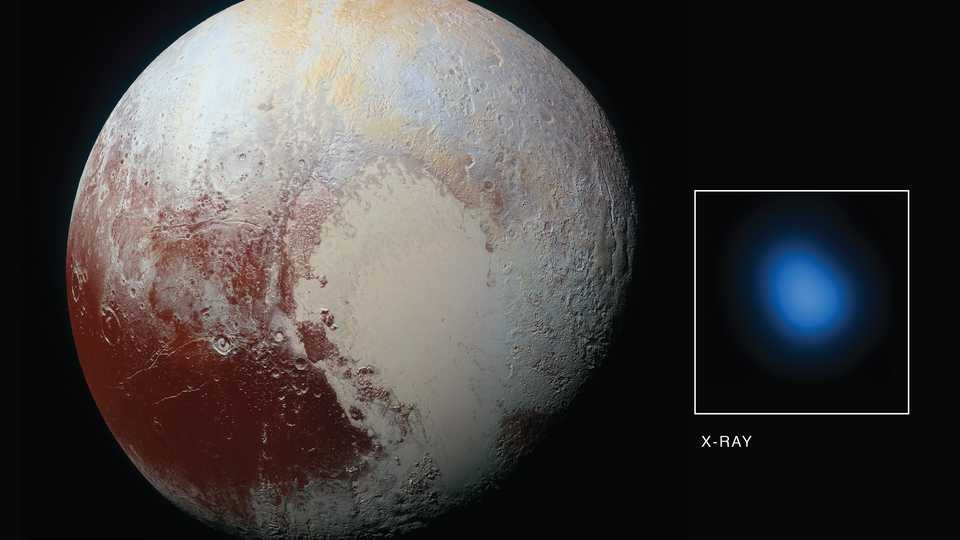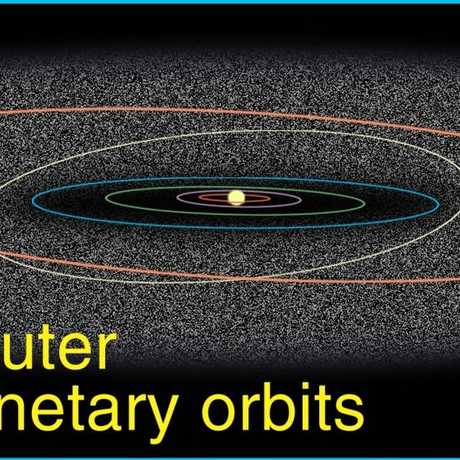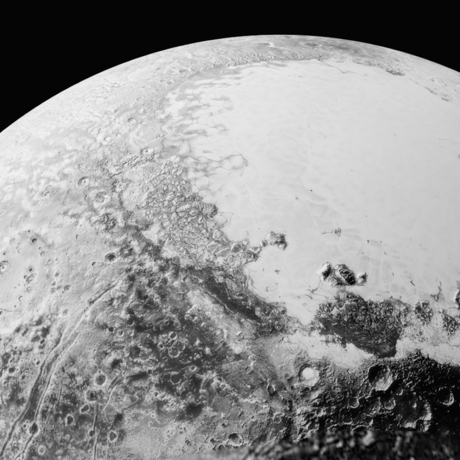Science News
Mysterious X-rays from Pluto

As the New Horizons probe hurtled towards Pluto in 2014, the Chandra X-ray Observatory was carefully investigating the light emitted by the dwarf planet. Astronomers suspected that, like many other objects that originate in the distant Kuiper Belt, Pluto gradually loses some fraction of the gaseous atoms that make up its atmosphere to space. But how fast? What was the rate of that atmospheric loss? Studies of Mars have shown that atmospheric loss can be traced by searching for X-rays produced when those ambient escaped gases encounter the solar wind, high energy particles emitted from the Sun. Thus, by observing the intensity of X-ray emissions from Pluto, a rough limit could be placed on how quickly the small world’s atmosphere escapes.
Initially, only a handful of X-rays were discovered, but the sample wasn’t large enough to definitively make any claims. This prompted a follow up survey in 2015, allowing the science team, led by Carey Lisse of Johns Hopkins University, to make observations with Chandra in step with New Horizons as it made its close approach to Pluto. This round of follow-up measurements produced a result that left the team baffled: the X-ray observations suggest an atmospheric loss about 50 times greater than New Horizons measured directly as it flew by the distant world.
The team offered up three possible origins that could explain the majority of X-rays seen within the Solar System, but they weren’t convinced any of the ideas really explained the observations they had made of Pluto. Those possibilities:
One, X-rays are often found when high energy particles interact with a planet’s magnetic field, but theoretical models don’t predict that Pluto should have any magnetic fields at all, and measurements from New Horizon saw no signs of the telltale auroras that generally come with magnetic fields.
Two, it’s possible that X-rays originating from the Sun could be scattering off the surface of Pluto and reflecting back toward Earth, but the energies observed don’t match. Making things even worse, similar observations from Mars and Europa suggest we’re observing thousands of times more X-rays bouncing off Pluto than we should expect from this effect.
Finally, three, it could be that the X-rays really are coming from the lost atmosphere’s interaction with the solar wind, but these interactions would need to be 150 times more efficient at making X-rays than anywhere else we’ve seen in the Solar System. It’s possible that the solar wind is much more densely packed and focused specifically around Pluto, but there’s no other evidence to suggest this—or any explanation why that would be the case.
Without any clear answers the team can only speculate: Maybe Pluto has a special atmospheric composition that is far better at reflecting X-rays than we’re accustomed to seeing. Could the magnetic fields from the rest of the Solar System be shaping and modifying the solar wind in ways we haven’t anticipated? Maybe the conditions of the ambient gas in the space around Pluto make it much more susceptible to interactions with the solar wind.
Whatever the case, even with New Horizons brief encounter with Pluto far behind it, many mysteries have been left in its wake.
Image: NASA/Johns Hopkins University Applied Physics Laboratory/Southwest Research Center/Chandra X-Ray Center


